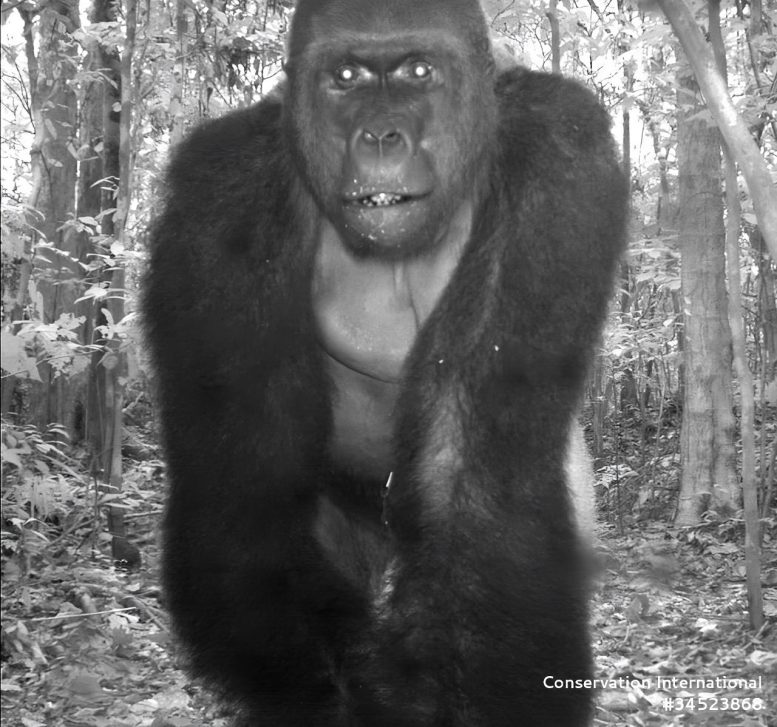
Gorilla. Taken by a wildlife camera. Credit: TEAM – Tropical Ecology Assessment and Monitoring Network
A network of wildlife cameras and 2.3 million photos show the activity patterns of tropical mammals and the reasons behind them.
The daily activity patterns of animals, including when they eat, sleep, and move, vary between species and the mechanisms behind these patterns are not well understood. Understanding the activity patterns of animals in a community, including when and why they are active, is crucial for conservation efforts.
The active period is when animals fulfill their ecological role, but it is also the time when they may be exposed to dangers such as hunting or conflicts with humans and their activities.
Sifting through 2.3 million camera-trap photos of tropical mammals, an international team of researchers has found remarkable consistent patterns of daily activity across continents.
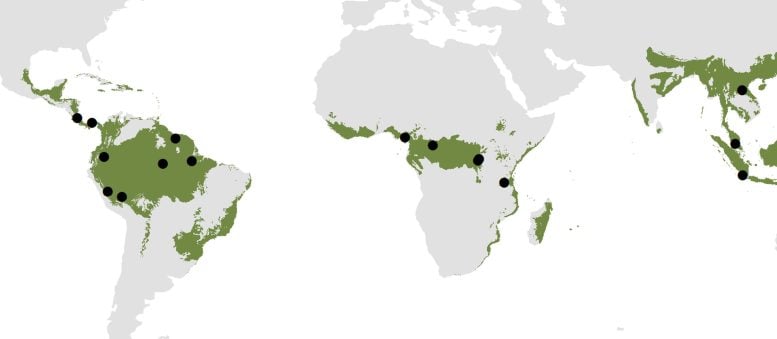
Map showing the different locations of the cameras used in the study. Credit: Andrea F. Vallejo-Vargas
Size and diet dictate
“The main determining factors of daily activity were body size and diet,” says Ph.D. candidate at the Norwegian University of Life Sciences and lead author of the study, Andrea F. Vallejo-Vargas.

Ph.D. candidate Andrea F. Vallejo-Vargas. Credit: NMBU – Norwegian University of Life Sciences
Large carnivores and omnivores – animals that eat both meat and plants – are more likely to be active during the day than smaller species with the same diets. By contrast, larger herbivores – plant eaters, were more likely nocturnal that smaller herbivores.
“We suppose that there is a link between body size and so-called thermoregulation constraints,” she says.
This means that the larger the body, the more energy is required to maintain optimal body temperature in a warm climate. It is probably more favorable for the larger herbivores to be active at night to save energy
Insectivores were the one exception where the pattern differed across continents: larger species were more likely to be active in the day in the Americas while the reverse was true in Africa and Asia.
Carnivores follow their prey
While herbivores were affected by temperature; carnivores, particularly top predators, have activity patterns that match their prey.
“We saw a considerable overlap of activity of top predators to that of the herbivores they eat.”
Similarly, small prey species were found to try to avoid the top predators.
These behavioral patterns have cascading impacts further down the food chain, affecting other species.
“For instance, we do not know whether the disappearance of top predators in some protected areas affects the behavior of prey, or whether the decreased abundance of prey affects the activity of predators and the possible cascading effects on the ecosystem” she comments.
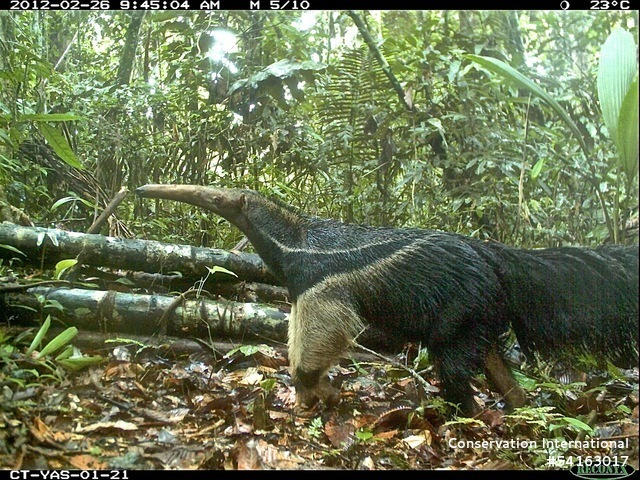
Giant anteaters. Taken by a wildlife camera. Credit: TEAM – Tropical Ecology Assessment and Monitoring Network
A vast network of cameras across the globe
The researchers’ data stem from three tropical biogeographic regions, Neotropics, Afrotropics, and Indo-Malayan tropics. Animals caught by the cameras comprised of 166 species, including various weasels, wild pigs, gorillas, African buffalo, jaguars, and tigers. Many of the captured species are endangered, and many of them we know very little about.
The photos are collected by the “Tropical Ecology Assessment and Monitoring (TEAM) Network”, a multi-year, multi-site (17 protected areas), and multi-region effort.
TEAM consists of a large group of research partners who collect data on biodiversity in tropical forests, mostly on terrestrial vertebrates. The initiative was created to establish an early warning system for tropical forests, with the goal of better understanding how forests and wildlife are responding to changes at local, regional, and global scales.
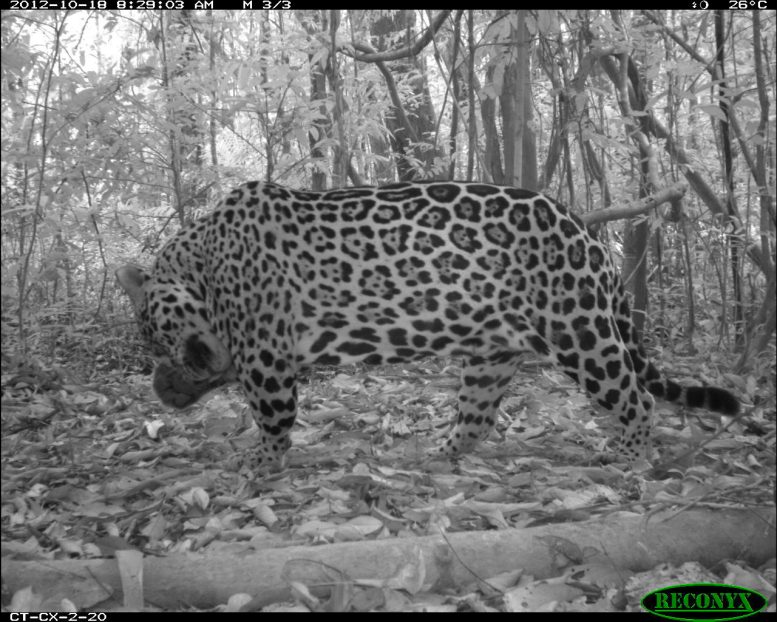
Jaguar. Taken by a wildlife camera. Credit: TEAM – Tropical Ecology Assessment and Monitoring Network
Surprising consistency
The results were remarkably consistent across continents.
“You would think there would be some variation between ecosystems as far apart as Africa and South America,” Varllejo-Vargas comments. “There are large differences in species, particularly endemic ones. For example, there are no elephants or gorillas in the Amazon, nor armadillos in Malaysia.”
However, the researchers found very little difference in activity patterns between continents.
Vallejo-Vargas explains that the diel activity of these tropical mammal communities appears shaped by similar processes and constraints among regions.
“Think of it as parallel evolutionary or ecological processes happening across the world at the same time, yielding the same results over and over.”
From the top or from the bottom?
In addition to conservation, the published results provide key knowledge to behavioral science and theoretical ecology. One of the questions the researchers sought answered was “top-down?” or “bottom-up?”. Meaning: were the mammals influenced by pressure and processes coming from above the food web (top-down), such as predation, or from below (bottom-up), meaning i.e., food availability.
“Herbivore and insectivore activity appears to be shaped by climate. Predator and prey activity, on the other hand, are influenced by the animals and their interactions,” Vallejo-Vargas says.
Thus, bottom-up processes dominate the activity of carnivores, and top-down processes dominate the activity of prey (mainly omnivores and insectivores).
In a nutshell:
- Study based on 2.3 million camera-trap photos of tropical mammals across three continents.
- Larger herbivores tend to be more active during the night. Smaller herbivores are more active during the day.
- Insectivores were the one exception where the pattern differed across continents: larger species were more likely to be active in the day in the Americas while the reverse was true in Africa and Asia.
- Herbivore and insectivore activity appears to be shaped by climate.
- Predator activities are influenced by prey behavior.
- Photos collected by the “Tropical Ecology Assessment and Monitoring (TEAM) Network”. A large network of voluntary research partners who collect data on biodiversity in tropical forests.
Reference: “Consistent diel activity patterns of forest mammals among tropical regions” by Andrea F. Vallejo-Vargas, Douglas Sheil, Asunción Semper-Pascual, Lydia Beaudrot, Jorge A. Ahumada, Emmanuel Akampurira, Robert Bitariho, Santiago Espinosa, Vittoria Estienne, Patrick A. Jansen, Charles Kayijamahe, Emanuel H. Martin, Marcela Guimarães Moreira Lima, Badru Mugerwa, Francesco Rovero, Julia Salvador, Fernanda Santos, Wilson Roberto Spironello, Eustrate Uzabaho and Richard Bischof, 19 November 2022, Nature Communications.
DOI: 10.1038/s41467-022-34825-1
The study was funded by the Research Council of Norway.



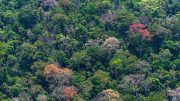



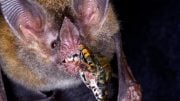

Be the first to comment on "Scientists Reveal the Secret Life of Tropical Mammals"